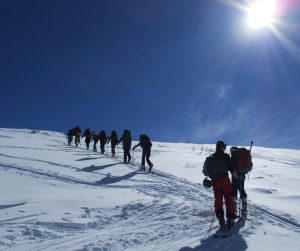Tech Talk
Tech classes may not seem like a natural fit for a school that’s renowned for its outdoor education, but CRMS’ nascent and cutting-edge computer sciences department not only appeals to a broad swath of students but also taps into some of the most deep-rooted values of the school.
“In the active program, we present students with challenges and problems that they want to solve,” says Computer Science Department Chair, Jeremy Wolf. “They want to ride the trail, climb the rock, make it through the canyon. These technology courses are the same. We’re setting big challenges in front of students that they want to solve.”
After completing the prerequisite of Algebra II, students can choose from three year-long courses: a computer programming class, a robotics class, and a 3D video game design class.
“The idea was to give kids a more hands-on and direct way of applying mathematical thinking,” says Wolf. “When the kids are excited about something, sitting down with a tough problem and figuring out how to get it done is a lot more palatable.”
According to Wolf, the magic of all three courses is the pairing of creativity with analytical problem solving in a way that kids aren’t used to seeing. All three classes also apply a project-based learning format.
“We’d be given a project and have to learn how a skill works, why it works, and the way it works in two weeks,” says senior Miller Roman, who began in Robotics last year and is enrolled in the remaining two classes this year. “I was really impressed by how well the programs teach computer knowledge without sitting us down and saying, ‘read this.’ ”
Teachers work hard to prepare kids for the persevering mindset needed to work through the inevitable technology and design frustrations encountered as they create their own working prototypes. Students quickly learn to appreciate what it takes to produce a polished video game or robotic car and gain an appreciation for the creative process.
Thanks to a $4,000 grant from Colorado Academy, the department took its game design course to the next level recently with the purchase of two virtual reality stations. Both Wolf and the students were stunned by how real and immersive the experience feels. Motivation is not an issue for students who get to work in 3D. “This is a class where I have to tell kids to stop so that I can explain what’s going on,” says Wolf. “They show up early and it’s screens up and they’re working. They don’t do that in my physics class.”
The depth and complexity of the challenges students tackle in these classes set them up to pursue careers in computer sciences. Two students have already graduated with plans to move into the field. Roman considers that depth and thoroughness of preparation to be one of the assets of the program.
“Few high schools in the nation offer this level of game design,” he says. “It’s a real opportunity to learn a skill set you could use right out of high school. The dedication of the teachers and how much effort they’ve put into learning the programs show they really care about how we learn. When your teacher’s excited, it’s easier to be excited too.”
The feeling is mutual. “That’s what we’re after here– getting the kids excited about something, solving hard problems, and working hard,” Wolf says. Equally thrilling is witnessing when kids who are not necessarily gamers explore the artistic side of the programs and see their vision and creativity come alive on the screen for the first time.
Both Roman and Wolf hope the program will continue to expand in the coming years. As real-world demand for computer science skills continues to increase, Roman would like to see the addition of more VR capable computers, while Wolf sees the value for both a more basic introductory computer class and more advanced classes to allow further specialization in computer science.
“Continuing to develop classes that are engaging and get kids interested is the key piece,” he says. “All three of our classes do a good job of offering interesting projects and problems that students want to solve.”
For descriptions of the Computer Science classes, visit: www.crms.org/academic/computer-science/
 MYCRMS
MYCRMS





 Virtual Tour
Virtual Tour

